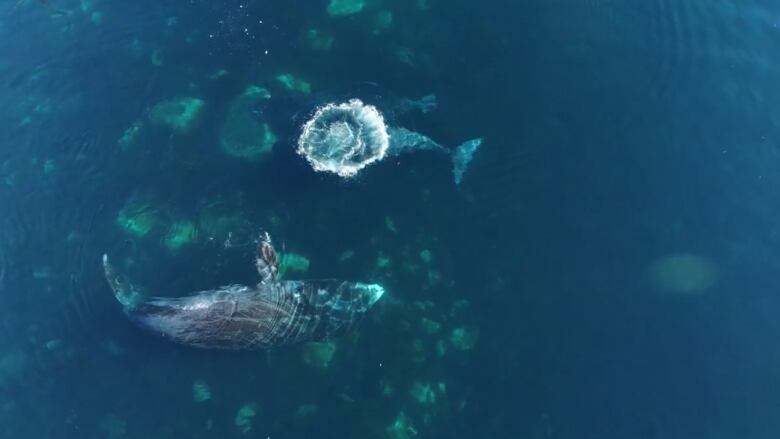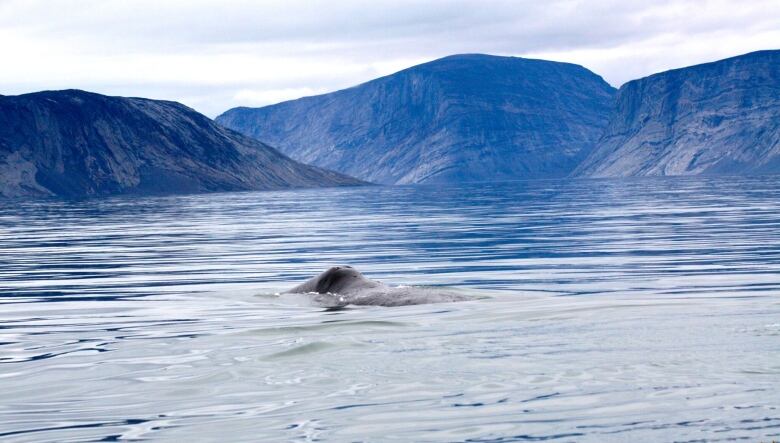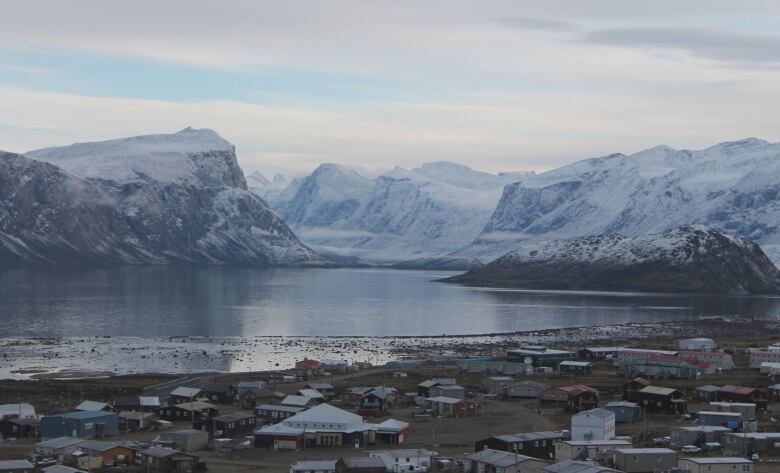Cumberland Sound, a spa retreat for bowhead whales in need of deep exfoliation
'On occasion, we would hear really loud vocalizations that sounded almost like a moan'

It was an innocent invasion of privacy when Canadian researchers stumbled upon an exclusive retreat for whales and caught some bowheads that, they determined,were exfoliating their skinin the waters off Nunavut.
The discovery, described in a study published Thursday in the journal Plos One, explains strange behaviourby the whales that hasoften puzzled Inuit hunters and commercial fishers.
Back in 2014, researchers from the University of British Columbianoticed the whales frolicking around Cumberland Sound,a waterway just off of Baffin Island nearPangnirtung, Nunavut.
The whales danced in the water, twisting and turning and waving their flippers in the air.

"We would see whales rolling around on occasion we would hear really loud vocalizations that sounded almost like a moan," said Sarah Fortune, a PhD student and the study's lead author.
"We were really perplexed," said Fortune, who initially set out to observe whale feeding patterns.
She ruled out mating as an explanation because the whales were scattered throughout the bay. Then they thought the whales were just socializing.

But when they saw large pieces of skin peeling away from the whales' bodies, it clicked.The whales were rubbing off dead skin on boulders in the shallow water.They wereexfoliating and Cumberland Sound was, in a way, a giant salt-water spa.
Later, in 2016, theresearchers went back.Aerial drone videos confirmed their hypothesis that the whales were, in fact, engaging in some rock-rubbing action.
"They used these rocks almost like a pumice stone," said Fortune.
Why they rock-rub
Molting when an animal sheds old skin, hair or feathers wasknown in beluga, Southern right whales, and bowhead whalesoff the coast of Russia. Butvery little was known about it with bowhead whales in the Eastern Canada and the West Greenland area.
The research indicates thatbowheadwhales choose to molt,or rock-rub,in shallow waters where it tends to be warmer.
Exfoliating in warm coastal waterpromotes blood flow, bringing nutrients and hormones that promote skin growth, according to the study.
The findings are important in the long run, says Fortune.
"We know that their habitats are changing rapidly with the decline of sea ice In order to help with conservation of Eastern Canada, West Greenland bowhead whale population, it's really important to know when, where and why whales go."
The biggest threat to this population is thenorthward migration of killer whales, due to decreases in sea ice cover, says Fortune.
"So killer whales are the probably the biggest predator ofbowheadwhales currently."

Thickest skin, longest life
Bowheadwhales, the mammal with the longest lifespan, can live up to 200 years and were nicknamed "rock-nose whales" by whalers, because they would often rest their chins on large rocks.
Bowheadsalso have the thickest blubber of any mammal, so they're very well insulated, says Fortune.
- DFO studies suspected increase in Nunavut killer whales
- Nunavikgirl harpoons 14-metrebowheadon firsthunt
- Bowheadwhales' genome may offer clues to aging gracefully
The next step is to document the skin conditions of the whales to pinpoint exactly when molting occurs.
"We'd like to work with our local partners and have them document the skin condition of the whale over time."

With files from Michelle Pucci













_(720p).jpg)


 OFFICIAL HD MUSIC VIDEO.jpg)
.jpg)



























































































